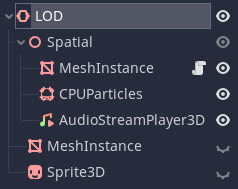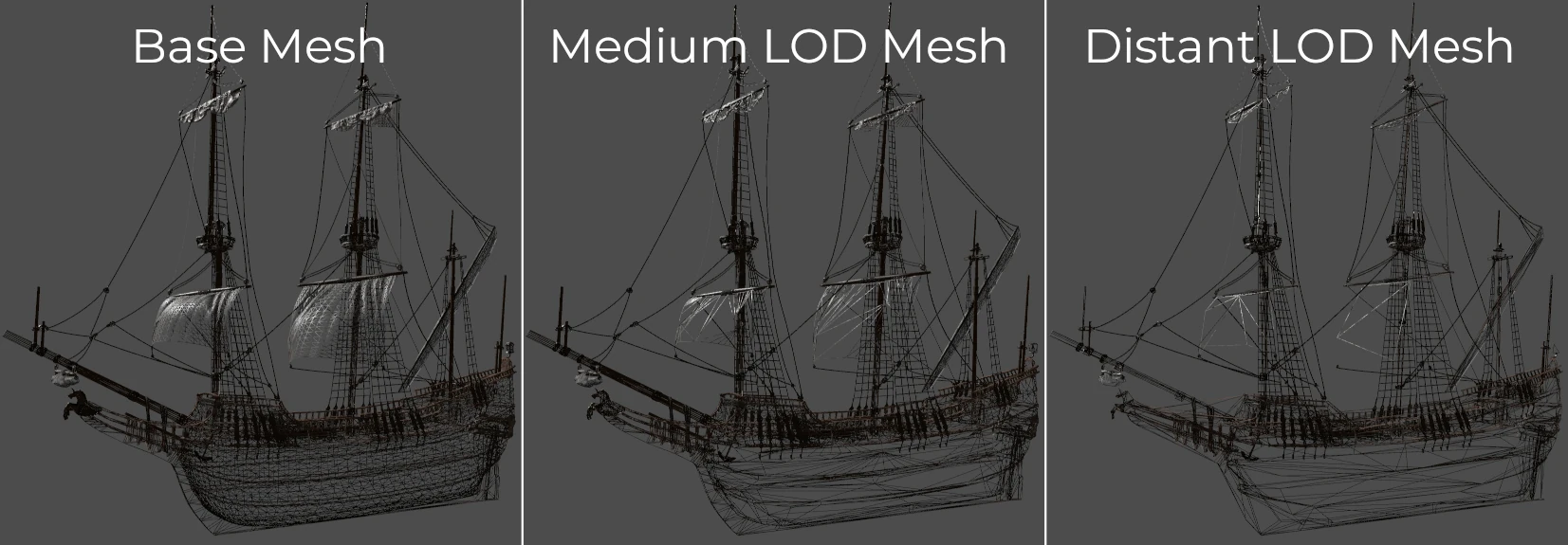Level of Detail (LOD)¶
Level of detail (LOD) is one of the most important ways to optimize rendering (and performance in general) in a 3D project, along with occlusion culling.
The LOD node¶
The LOD node provides a simple way of automatically switching between visual
representations as the node gets closer or further from the
Camera, in order to increase performance.
You might:
substitute lower poly count meshes
swap several separate meshes for a single approximate mesh
swap from a mesh to a billboard
turn off particle effects, animations, sounds, scripts according to distance
entirely remove visuals in the distance
The LOD node should be added as a parent to whatever you wish to use to show
the object, e.g. a MeshInstance. You can place
several Spatial derived nodes as children.

The LOD node will automatically hide and show Spatial children depending on
the distance from the Camera.
Tip
You can react to NOTIFICATION_VISIBILITY_CHANGED in scripts to detect
when a node has been shown or hidden.
Children are shown in order with the first children shown when closest to the
Camera, and the latter children shown when further away.
You can determine the distance at which these swaps occur by setting the
lod_range property of Spatial.
Note
Children of the LOD node can in turn have any number of children, of
any type. These grandchildren will inherit their visibility as the LOD
node operates.
One of the most common cases is to swap between high-poly and low-poly models.

From most detailed (left) to least detailed (right), wireframe view¶
Note
Redot 3.x does not currently generate decimated meshes for you. You are advised to generate several versions of a mesh in your modeling program (e.g. using the Decimate modifier in Blender).